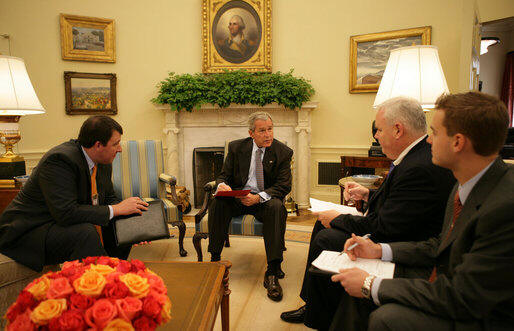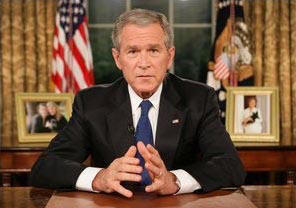Vol. 1, No. 136
| Community Phone & Email Directory |
|
Jewish World Community Calendar AJE Makor Calendar UJF Community Calendar |
|
Search This
Site (click here) |
|
Jewish Forum questions: join the discussion; click here |
| Jewish Grapevine files |
| Back issues by date |
| Back-issue headlines |
|
PLEASE SUPPORT OUR ADVERTISERS; THEY ARE HELPING TO BRING
San
Diego Jewish World TO YOU: ●Agency for Jewish Education ●America's Vacation Center ●Anti-Defamation League ●Bubbla Packaging ●Chabad at University City ●Congregation Beth Israel ●Elijah's ●Humanistic Jewish Congregation ●I'm There For You Baby radio show ●In the Know radio show ●Israel Guide Dog Center ●JCC Maccabi games ●Jewish American Chamber of Commerce ● Jewish Community Foundation ●Jewish Family Service ● Museum of Man: Journey to the copper age ●Ohr Shalom Synagogue ●Old Town Trolley Tours of San Diego ●San Diego Community Colleges ●San Diego Jewish Academy ● Seacrest Village Retirement Communities ●Tifereth Israel Synagogue |
|
Contact us Email: sdheritage@cox.net PO Box 19363 San Diego, CA 92159 (619) 265-0808 San Diego Jewish World is a publication of The Harrison Enterprises of San Diego, co-owned by Donald & Nancy Harrison. |
Jews in Congress
This website regularly covers the activities of 43 members of
the Jewish community currently serving in the Senate and the House of
Representatives. Here, by state, is a roster:
key:
Democrat
Republican
Independent
Arizona (1)
Rep. Gabrielle Giffords
California (10)
Sen. Barbara Boxer
Sen. Dianne Feinstein
Rep. Howard Berman
Rep. Susan Davis
Rep. Bob Filner
Rep. Jane Harman
Rep. Tom Lantos
Rep. Adam Schiff
Rep. Brad Sherman
Rep. Henry Waxman
Connecticut (1)
Sen. Joseph Lieberman
Florida (3)
Rep. Ron Klein
Rep. Debbie Wasserman Schultz
Rep. Robert Wexler
Illinois (2)
Rep. Rahm Emanuel
Rep. Jan Schakowsky
Kentucky (1)
Rep. John Yarmuth
Maryland (1)
Sen. Benjamin Cardin
Massachusetts
(1)
Rep. Barney Frank
Michigan (2)
Sen. Carl Levin
Rep. Sandy Levin
Minnesota (1)
Sen. Norm Coleman
Nevada (1)
Rep. Shelley Berkley
New Hampshire (1)
Rep. Paul Hodes
New Jersey (2)
Sen. Frank Lautenberg
Rep. Steve Rothman
New York (7)
Sen. Charles Schumer
Rep. Gary Ackerman
Rep. Eliot Engel
Rep. Steve Israel
Rep. Nita Lowey
Rep. Jerrold Nadler
Rep. Anthony Weiner
Oregon (1)
Sen. Ron Wyden
Pennsylvania (2)
Sen. Arlen Specter
Rep. Allyson Y. Schwartz
Tennessee (1)
Rep. Steve Cohen
Vermont (1)
Sen. Bernie Sanders
Virginia (1)
Rep. Eric Cantor
Wisconsin (3)
Sen. Russell Feingold
Sen. Herb Kohl
Rep. Steve Kagen
Additionally, we report on the activities
of fellow members of our Jewish community at various levels of
government. These include:
Federal government
White House:
Josh Bolten, chief of staff
Joel Kaplan, dep. chief of staff for policy
Cabinet:
Homeland Security: Michael Chertoff
U.S.Trade Representative:
Susan Schwab
Federal Reserve Board: Ben Bernanke, chair
U.S. Supreme Court Justices
Ruth Bader Ginsburg
Stephen Breyer
State Governments
California: Insurance
Commissioner Steve Poizner
New York Gov. Eliot Spitzer
Pennsylvania Gov. Ed
Rendell
Big City Mayors:
Louisville, Kentucky: Jerry
Abramson
New York, N.Y.: Michael
Bloomberg
San Diego County
District Attorney Bonnie
Dumanis
Sheriff Bill Kolender
Tax Assessor/ Recorder/ Clerk Greg Smith
|
(Please click on headline below to jump to the story) Rice interview adds to speculation that Syria was trying to go nuclear
President Bush says 5,700 troops to come home from Iraq by the end of the year
Tashlich 5768 in
San Diego
|
|
Rice interview adds to speculation that Syria was trying to go nuclear
San Diego Jewish World report
WASHINGTON, DC—Secretary of State Condoleezza Rice added credence to reports that Syria may have been attempting to secretly build a nuclear facility during an interview with Fox broadcaster Sean Hannity today.
One of seven interviews Rice gave in the build-up toward President Bush's speech tonight on Iraq, Hannity's was the only one to also ask about Syria:
"What are we to make of the reports this week that, in fact, Syria is building nuclear facilities" Hannity asked.
Rather than confirm or deny the report directly, Rice responded that the United States has "long been concerned about the weapons of mass destruction. I think the President put it at one time that—you know, we have to have policies that prevent the world's most dangerous people from having the world's most dangerous weapons.
"And that's what we do and that's what we do every day," Rice continued. "And we are working with our allies and working directly to try to shut down activities. We had a big success, for instance, when we shut down the A.Q. Khan network, which was a source of proliferation to all kinds of rogue states and so this is a constant activity.
"That's why we have a Proliferation Security Initiative that tries to intercept dangerous cargos. So this is something that's been at the highest point of the President's agenda since he came into power and we work every day and we watch it every day and we're vigilant about it and we're determined."
Hannity did not try to pin Rice down further on the Syria question.
In another interview with Adam Schrager of KUSA, an NBC affiliate in Denver, the Secretary of State was asked about a recommendation by U.S. Sen. Ken Salazar (Democrat, Colorado) that the U.S. mission in the Middle East should be more focused on diplomacy, and lest on providing its security.
"We're very actively engaged in much of the iplomacy that was suggested by this very fine group of Americans led by Jim Baker and Lee Hamilton," Rice responded. "I, myself, am going to attend a regional conference of Iraq's neighbors. We've had one. We will have another. Iran and Syria will probably both be there, as they were at the conference a few months ago. The U.N. is stepping up its role in Iraq. Just the other day, the Saudis announced they're putting a diplomatic mission in Iraq.
"And we are also pursuing other diplomatic goals in the Middle East. I'll very soon be on my way to Israel and to the Palestinian territories to help the Palestinians and Israelis make progress toward a Palestinian state.
"So we're very actively engaged in the diplomacy. We could not agree more that Iraq is a part of a broader Middle East strategy."
Asked by Pamela Smith of KATV, an NBC affiliate in Little Rock, whether she might attend the 50th anniversary of the Little Rock school desegregation battle, Rice again referred to her role as a traveling diplomat.
"Well, I don't have a schedule just yet. I am, of course, traveling all the time. I'm trying very hard--we're trying very hard these days to help the Palestinians move toward a Palestinian state and there are a number of other demands. But certainly there will be a representative there because this is an extraordinary moment for America to remember the sacrifices of those who brought civil rights and brought a healing to the United States—our kind of second founding to overcome our birth defect of separation and slavery to make all Americans full citizens in this great country."
The preceding was based on interview transcripts provided by the U.S. State Department
|
Iraq Debate |


Left:
President Bush meets with speech writers (from left) Mark Thiessen, Bill
McGurn and Christopher Michel to discuss a draft; at right he delivers
to speech to a nationwide audience.
(White House photos
by Eric Draper)
President Bush
says 5,700 troops to come home from Iraq by the end of the year
WASHINGTON, DC (Press Release) —President Bush delivered a nationwide
television address tonight on the war in Iraq. A transcript
follows:
Good evening. In the life of all free nations, there come moments that
decide the direction of a country and reveal the character of its
people. We are now at such a moment.
In Iraq, an ally of the United States is fighting for its survival. Terrorists and extremists who are at war with us around the world are seeking to topple Iraq's government, dominate the region, and attack us here at home. If Iraq's young democracy can turn back these enemies, it will mean a more hopeful Middle East and a more secure America. This ally has placed its trust in the United States. And tonight, our moral and strategic imperatives are one: We must help Iraq defeat those who threaten its future and also threaten ours.
Eight months ago, we adopted a new strategy to meet that objective, including a surge in U.S. forces that reached full strength in June. This week, General David Petraeus and Ambassador Ryan Crocker testified before Congress about how that strategy is progressing. In their testimony, these men made clear that our challenge in Iraq is formidable. Yet they concluded that conditions in Iraq are improving, that we are seizing the initiative from the enemy, and that the troop surge is working.
The premise of our strategy is that securing the Iraqi population is the foundation for all other progress. For Iraqis to bridge sectarian divides, they need to feel safe in their homes and neighborhoods. For lasting reconciliation to take root, Iraqis must feel confident that they do not need sectarian gangs for security. The goal of the surge is to provide that security and to help prepare Iraqi forces to maintain it. As I will explain tonight, our success in meeting these objectives now allows us to begin bringing some of our troops home.
Since the surge was announced in January, it has moved through several phases. First was the flow of additional troops into Iraq, especially Baghdad and Anbar province. Once these forces were in place, our commanders launched a series of offensive operations to drive terrorists and militias out of their strongholds. And finally, in areas that have been cleared, we are surging diplomatic and civilian resources to ensure that military progress is quickly followed up with real improvements in daily life.
Anbar province is a good example of how our strategy is working. Last year, an intelligence report concluded that Anbar had been lost to al Qaeda. Some cited this report as evidence that we had failed in Iraq and should cut our losses and pull out. Instead, we kept the pressure on the terrorists. The local people were suffering under the Taliban-like rule of al Qaeda, and they were sick of it. So they asked us for help.
(jump to continuation)
